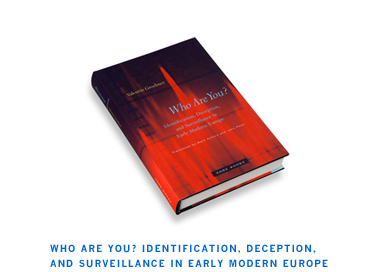 |
Who are you? And how can you prove it? How were individuals described
and identified by people who had never seen them before, in the centuries before photography and fingerprinting, in a world without centralized administrations, where names and addresses were constantly changing? In Who Are You?, Valentin Groebner traces the early modern European history of identification practices and identity papers. The documents, seals, stamps, and signatures were — and are — powerful tools that created the double of a person in writ and bore the indelible signs of bureaucratic authenticity. Ultimately, as Groebner lucidly explains, they revealed as much about their makers’ illustory fantasies as they did about their bearers’ actual identity.
The bureaucratic desire to register and control the population created, from the sixteenth century onward, an intricate administrative system for tracking individual identities. Most important, the proof of one’s identity was intimately linked and determined by the identification papers the authorities demanded and endlessly supplied. At the same time, these papers and practices gave birth to two uncanny doppelgängers of administrative identity procedures: the spy who craftily forged official documents and passports, and the impostor who dissimulated and mimed any individual he so disired. Through careful research and powerful narrative, Groebner recounts the complicated and bizarre stories of the many ways in which identities were stolen, created, and doubled. Groebner argues that identity papers cannot be interpreted literally as pure and simple documents. They are themselves pieces of history, histories of individuals and individuality, papers that both document and transform their owner’s identity — from Renaissance vagrants and gypsies to the illegal immigrants of today who remain “sans papiers,” without papers.
“Valentin Groebner, in his important new book, once again changes the
ways in which we think about the past and about ourselves. Tracing the premodern history of identification, he uncovers a wealth of narrative, bodily, and administrative practices of the later middle ages and early modern Europe that shed new light on the contemporary world and its post-genomic, post-9/11 obsesssions. Who Are You? is a work of sheer brilliance.”
— Peter Sahlins, Social Science Research Council and author of
Unnaturally French: Foreign Citizens in the Old Regime and After “[A] magisterial investigation of the complexities of
identity definition and identity documentation. . . .”
—The Medieval History Journal Also by this author:
Defaced: The Visual Culture of Violence in the Late MIddle Ages
|







